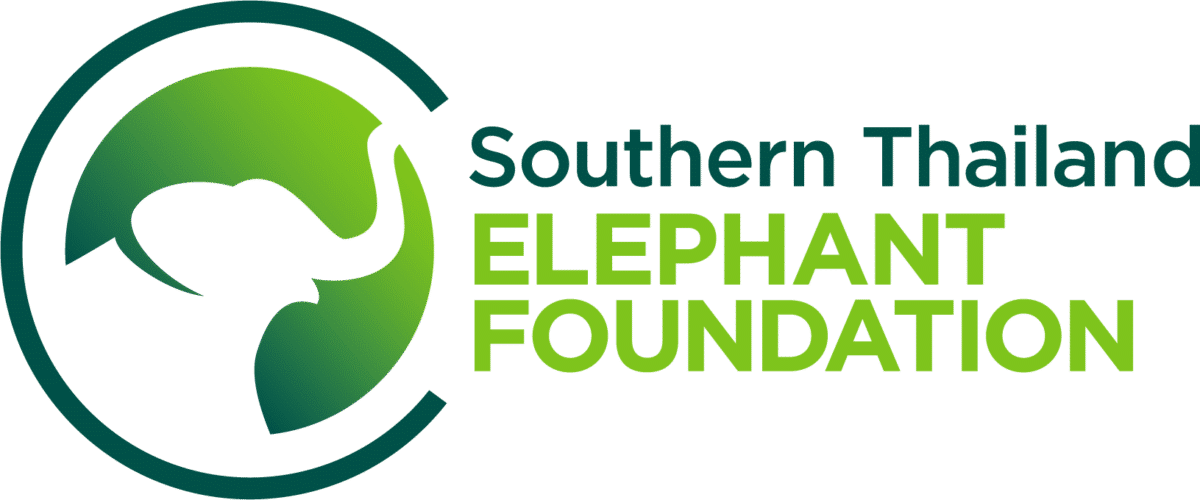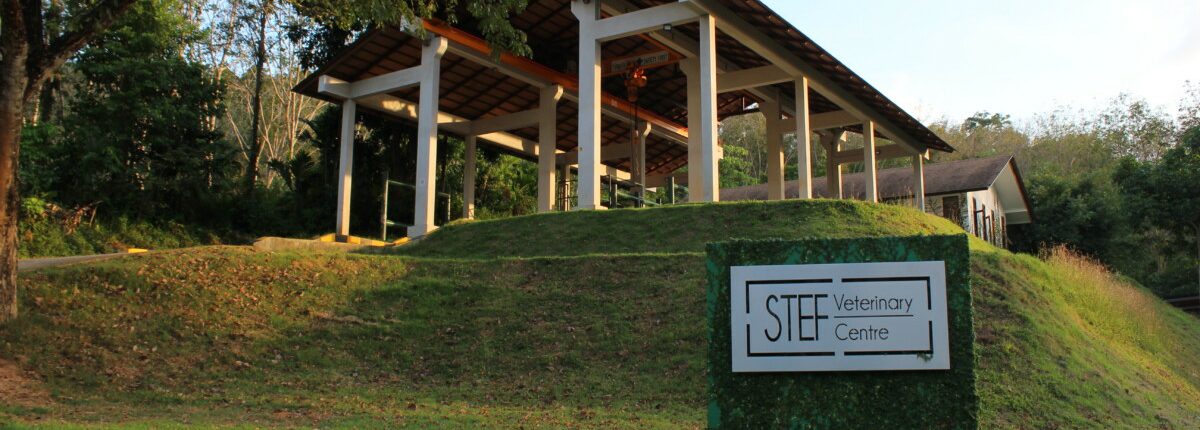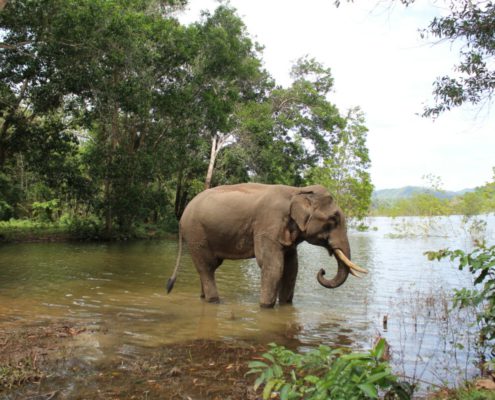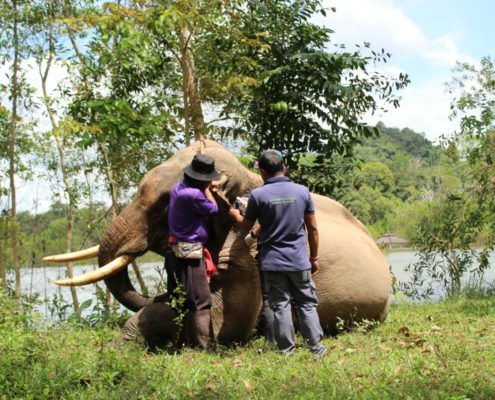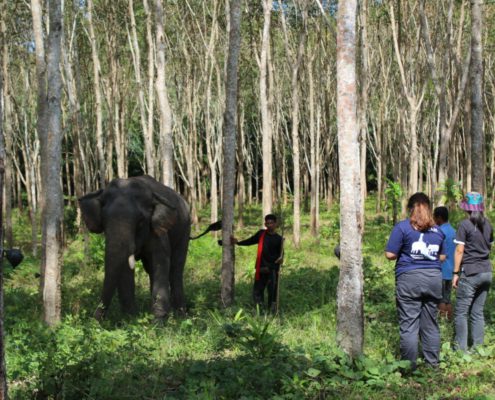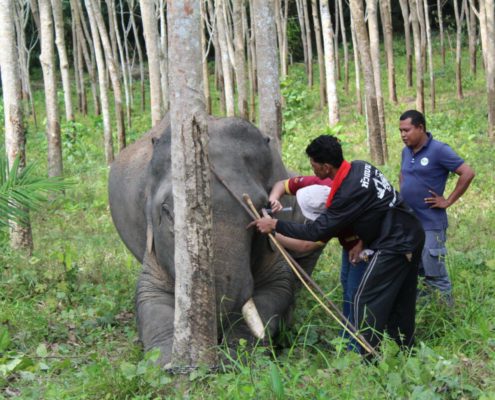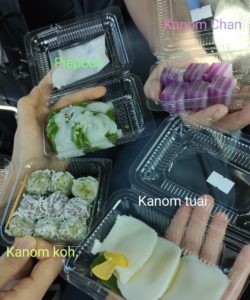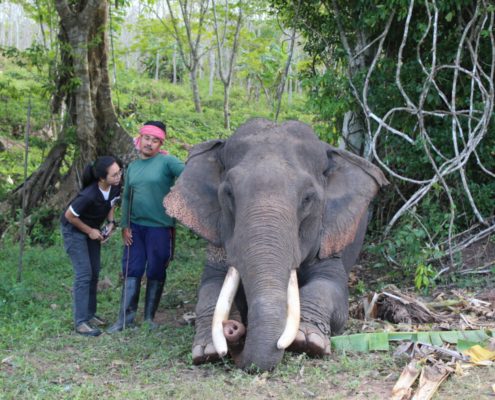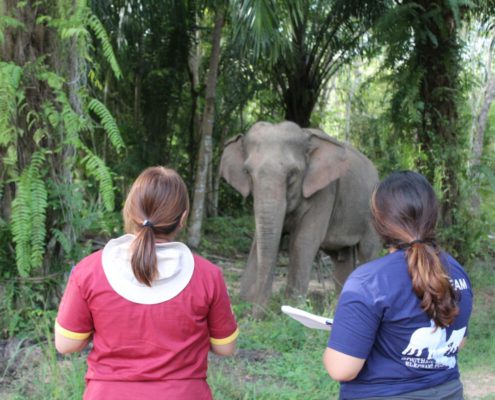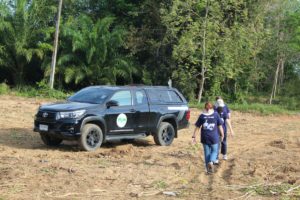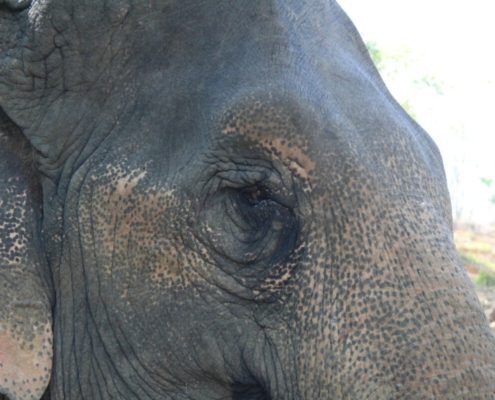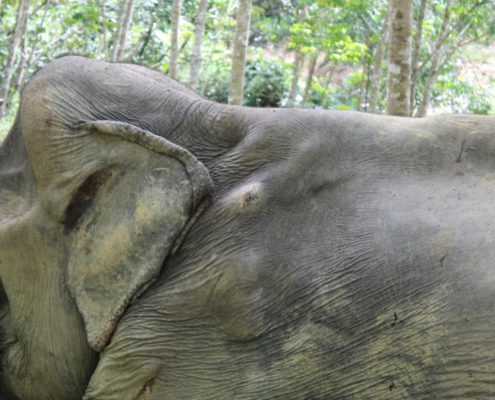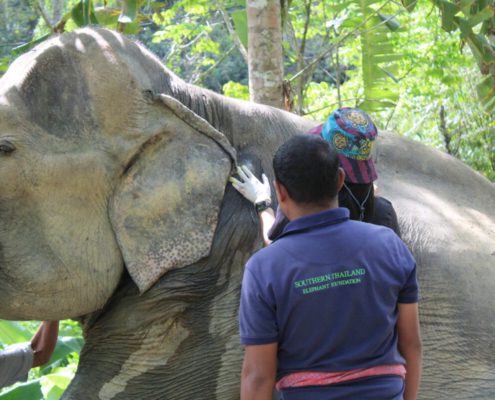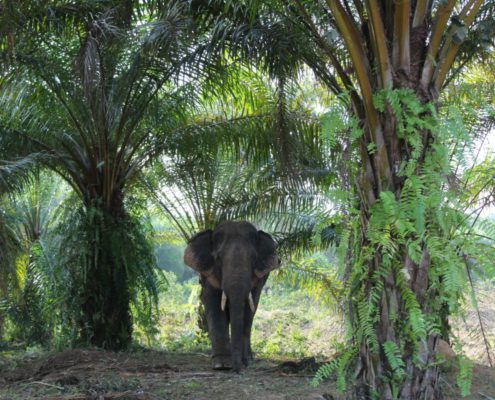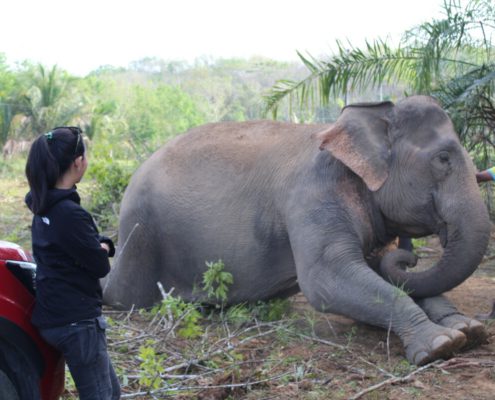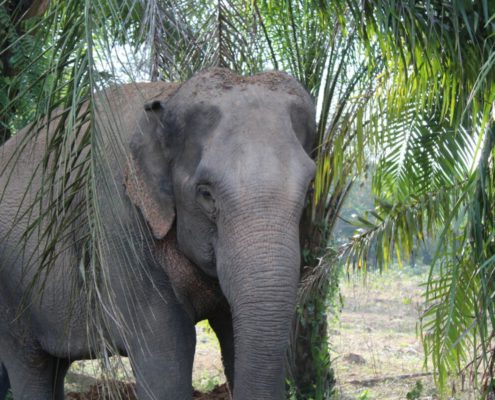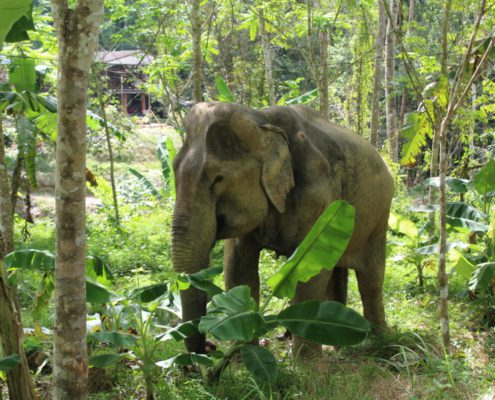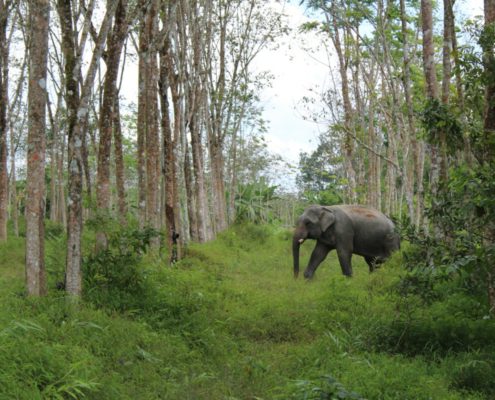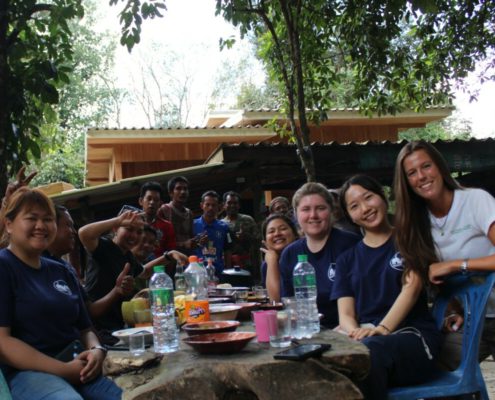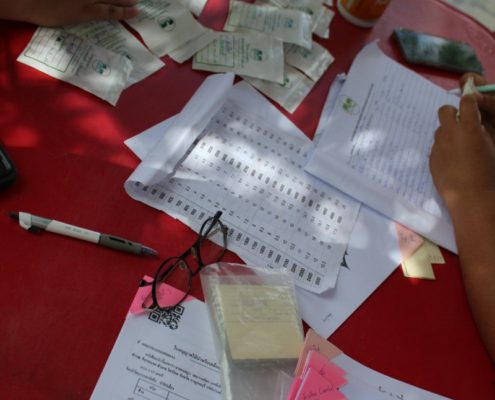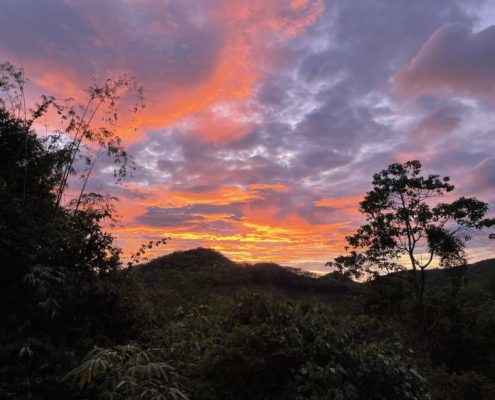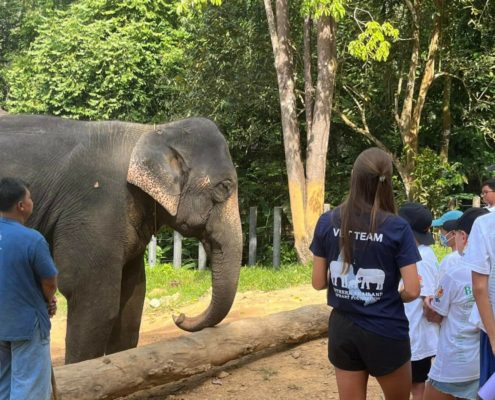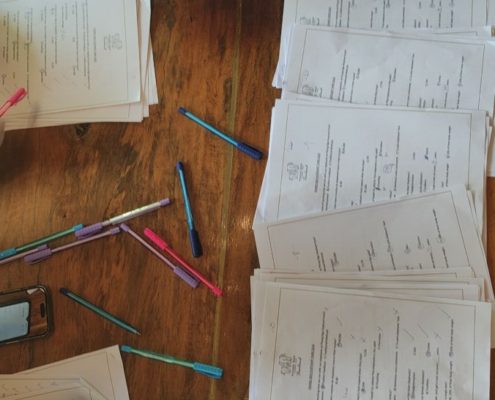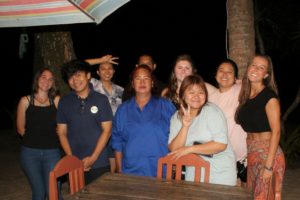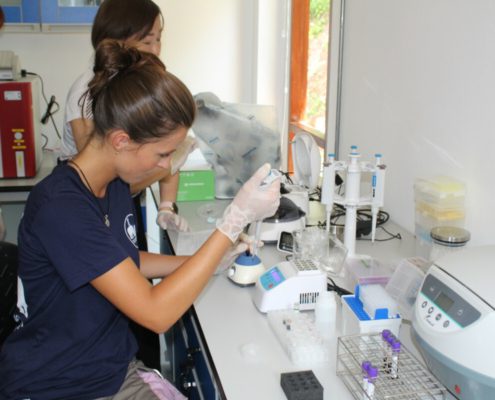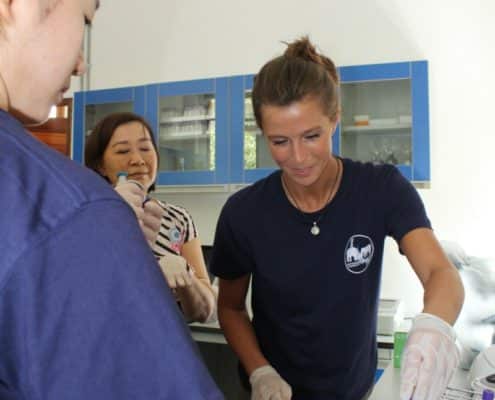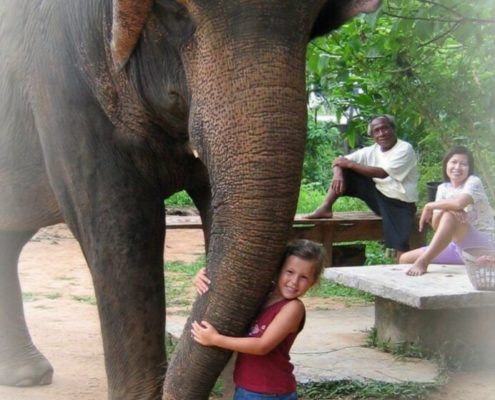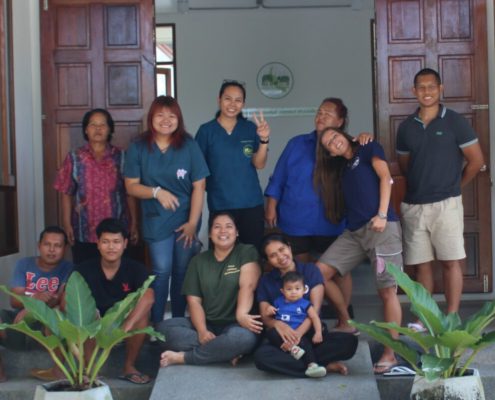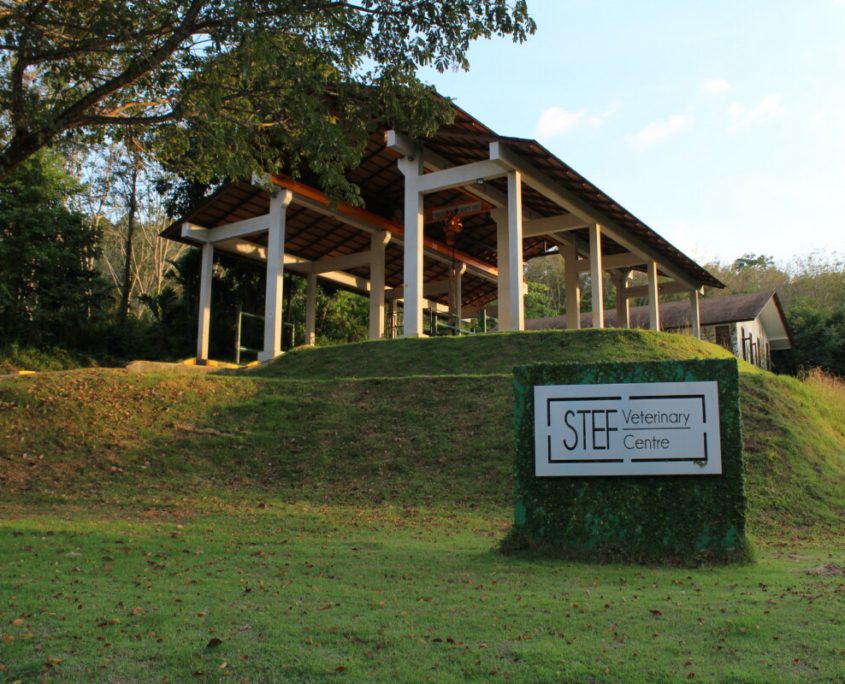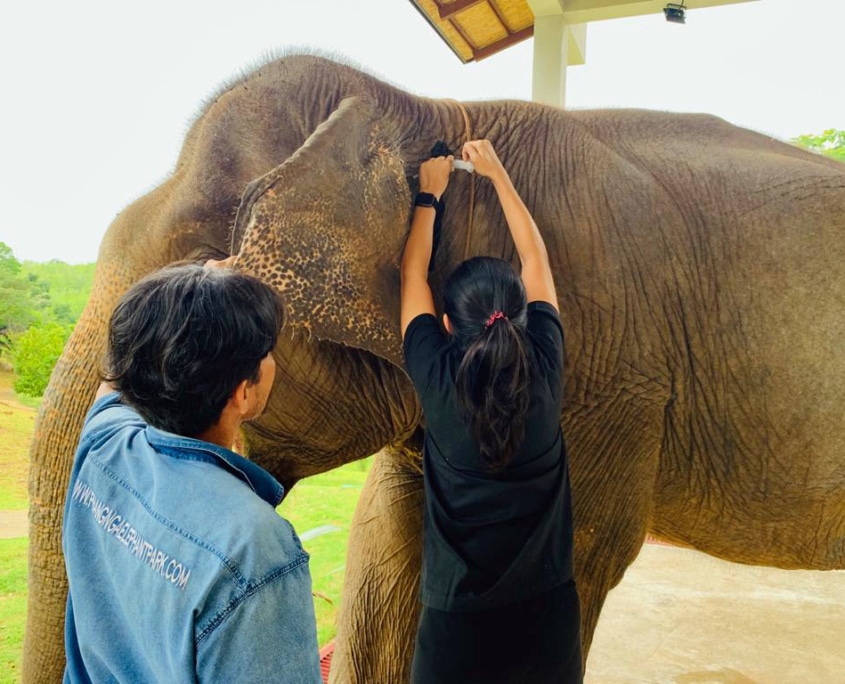My 6 Weeks as an Elephant Vet – Week Six
A blog by veterinary volunteer Vanessa Klabouch, a vet student at TiHo Hannover
My last week with STEF and STEF Thailand. An adventurous, amazing, beautiful, crazy one.
On Monday we drove to Trang with the team to do a general health check-up there. Just as last time, it took hours to get there and we had to conquer big distances between our patients. It takes time to find all the logging elephants in the forest! We visited 14 on Monday and 18 on Tuesday. Most of them were fine and received medications like deworming and supplements. Pepsi, a 25-year-old elephant bull, had a broken-up abscess and we treated him with antibiotics and anti-inflammatory drugs to prevent infection.
Si Nuan, a 38-year-old Elephant, showed lameness as a result of an inflamed nail crack. It will be cut out by the mahout and cleaned daily.
Somchai had something irritating in his eye, the tears kept running but he wasn’t able to get rid of it on his own. We tried to wash it out but he was not amused about that either, so we had to hand him over to the mahout while giving him instructions on how to do it. It worked pretty well
and we continued with the check-up tour.
We saw a total of 18 elephants in one day. Afterwards we drove further south, down to Songkhla in the evening. We stayed the night at the place of Fang’s Family and they welcomed us warmly with lots of delicious food, snacks, and drinks. We stayed up late talking before finally heading to bed.
After not enough sleep and waking up tired, on Wednesday we went on with our tour. A huge elephant camp and their inhabitants had to be visited. Apart from some lice infestations that needed an Ivermectin shot, we dewormed all of them and gave supplements.
The journey back took forever and so we only had time for a brief stop at the STEF hospital to grab a few things as they were waiting in Phang Nga Elephant Park for our arrival.
The other girls would join a tour tomorrow, but I had promised Jake (The owner of Phang Nga and Chairman of STEF Thailand, and a Founder Trustee of STEF UK) to help out with a children’s student group from British Phuket international school.
I was to go through the medical check with them and talk about some basic medical information and cases we treated since I have been volunteering with STEFT. I prepared a little list of points I definitely wanted to talk about and then went to bed.
When I woke up the next morning I was excited about my time with the students. I wasn’t sure how to keep them interested in what I had to tell them for one hour for each group, a pretty long time to keep concentrated for young people. But they were fascinated and asked so many smart questions that it was easy to talk for that long. It was a pleasure and a lot of fun to tell them about our work.
Because those who have been reading my blog for the last few weeks already know all about the cases, here are some elephant fun facts I told the children:
Here it was, Friday, the final day. And a Lab day. We were given advice and then allowed to practice how to detect EEHV. We extracted DNA out of blood and evaluated the ELISA (the enzyme-linked immunosorbent assay). It takes many steps, time, and high hygiene state, and for beginners like us some time to figure everything out.
It’s possible to use whole blood, serum, plasma or body fluids,
First add Proteinase K and Buffer and mix by pulse vortexing.
Incubate at 60°C for 15min to lyse the sample and vortex every 3-5min during that time.
Ethanol has to be added and mixed again.
The mixture has to be transferred to a mini column and centrifuged.
After adding buffer, centrifugation and wash buffer, and after that a short centrifugation again, the mini column has to be placed in the elution tube. The heated elution tube has to be added in the centre of the membrane and centrifuged by full speed. And that’s how you extract DNA so that it can be tested for EEHV.
It was very interesting and a lot of fun, too.
I want to end my blog with an old picture of mine. I think my fascination about these big animals started at that time. They are the largest land mammals, with remarkable cognitive abilities, long-term memory, and emotionality. They can recognize their reflection in a mirror, and remember migration routes over decades, we assume a kind of mourning when dealing with the mortal remains of conspecifics and they provide helpless herd members with food.
They communicate in a variety of ways, with each sound having different meanings in different situations. However, infrasound sounds that we cannot hear can also be emitted and heard miles above the ground. Body language also says a lot, which can be of great importance when working with these animals such as pricking up the ears to appear larger when threatened (as I mentioned several times).
The social structure of the herd is among the most complex in the animal kingdom, being led by a cow according to the concept of linear hierarchy determined by experience, size, and social skills. Men, on the other hand, go their own way after puberty and form bachelor groups, but with the same concept. In the sexually active phase, the male group separates to go looking for a partner and occasionally also joins their herd. And there is so much more fascinating things to discover and learn about these gentle giants.
I would like to thank everyone who made it possible for me to have this unforgettable time working with these exciting animals. Especially the team at STEFT, who made the time something very special in a personal way.
I have learned an incredible amount and am even more motivated to continue working with wild animals and especially the big grey ones!
Thank you for everything
Vanessa
